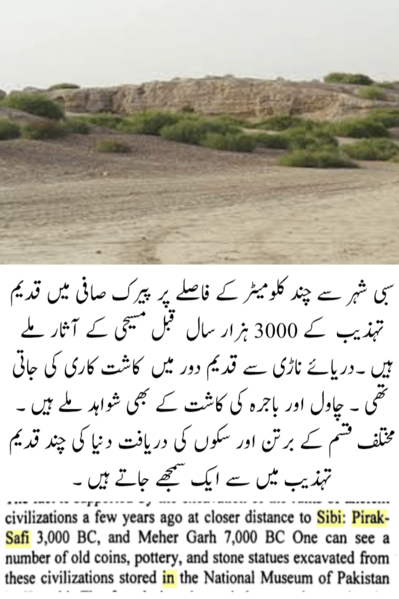
| PIRAK
Safi Pirak Sibi Pirak is an archaeological site belonging to the Indus Valley Civilization located in Balochistan, Pakistan. It is 20 km south of Sibi east of the Nari River. The mound is 8m high and covers approximately 12 acres (49,000 m2). The site of Pirak was first reported by Robert Raikes in 1963. It was excavated, between 1968 and 1974, before the well known sites of Mehrgarh or Nausharo by the French archaeological mission team led by Jean Marie Casal. According to the excavator, this site was occupied from c.1800 BCE to 800 BCE.
Historical
significance :
Architecture
and material culture :
In
the first period, structures of unburnt brick associated with a
large platform were found. A major part of the pottery was a coarse
ware decorated with applique bands and fingertip impressions. Both
terracotta and unburnt clay figurines of horses and camels were
found, along with numerous bones of both the species. The earliest
indubitable evidence of domestic horse comes from Safi Pirak, during
period I (c.1700 BC), well after Mature Harappan period. Terracota
button seals of circular, square or curved forms were common.
Cultivation
:
Source :
https://en.wikipedia.org/ |
